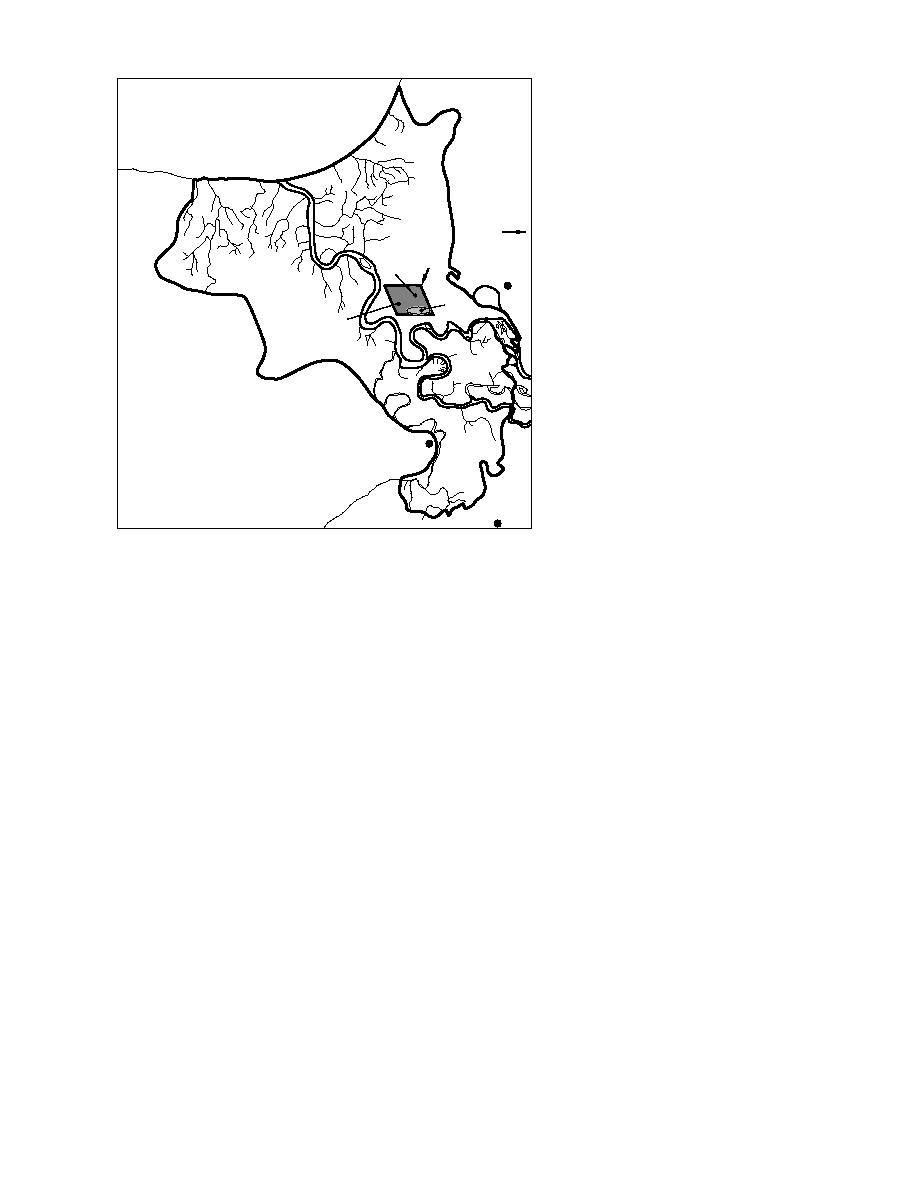
as deep as 40 cm in the tall coarse sedge
marsh area adjacent to the EOD pad.
Ice cover conditions
The duration, extent and properties
of the ice cover that forms over much
of ERF during each winter are gov-
erned by meteorological conditions,
snow cover, tidal effects, vegetation and
FP 1
Test
local hydrology. The number and peak
Impact
81
Area
heights of high tides during the winter
FP
EOD
mm
Fagan
Pad
determine the extent of periodic inun-
dations and the rate of ice buildup. Ob-
105
mm
servations and measurements of the ice
60
mm
cover on a portion of ERF during the
1990-91 winter indicate a very complex
situation (Taylor et al. 1994).
The extent and thickness of the ice
cover are initially governed by the wa-
ter surface elevations in the pond ar-
eas. The open ponds are normally the
FP Upper Cole
first areas to freeze over, forming con-
gelation ice. Standing-water areas with
heavy sedge and bulrush vegetation
FP
Fox
normally freeze later due to the insu-
lating effect of the vegetation. Without
Figure 1. Eagle River Flats, showing the firing points and impact
tidal influences the growth of the ice
areas.
sheet in the ponds will be a function of
the heat loss (primarily radiation cool-
ing and sensible heat conduction, both of which are
et al. 1993). The ponds, used by feeding water-
affected by the snow cover thickness). A thin or
fowl, are mainly located along the eastern and
nonexistent snow cover will promote rapid freez-
western perimeters of ERF. A 10-ha gravel pad (the
ing; a thicker snow cover will reduce both radiative
EOD pad) is located along the eastern edge of ERF
cooling and sensible heat conduction, thus reducing
(Fig. 1). The EOD pad is a former open-burn, open-
the rate of freezing. The weight of an even thicker
detonation disposal site.
snow cover, however, will exceed the buoyancy of
the ice sheet, causing flooding of the sheet, satura-
Seasonally frozen ground
tion of the overlying snow cover and rapid ice thick-
In areas of ERF without standing water, such as
ening.
the mudflats, the natural levees and the tall coarse
The role of the tides is important to both the
sedge marsh area adjacent to the EOD pad on the
continued growth of the existing ice sheets and
east side, the ground freezes each winter. The soils
extension of the area of ice cover. During a flood-
are generally saturated, and their properties gen-
ing high tide, water will back up in the channel of
erally do not vary appreciably. The soils consist of
the Eagle River and then back up into the series of
a mixture of silt and clay with a very small sand-
distributary channels and gullies that drain ERF
size fraction (Racine et al. 1992). The depth of sea-
into the Eagle River. The tide water floods out of
sonal freezing primarily depends on the depth of
the channels onto the mudflats and onto the ice-
the overlying snow cover, the frequency of tidal
covered ponds; the water depth of the tide depends
flooding and the seasonal air temperatures. Sedi-
on the tidal elevation and the terrain features.
ments underlying the shallow ponds along either
When the water flows over an existing snow-free
side of the flats may or may not freeze, depending
ice sheet or bare frozen ground when the air tem-
on the depth of the overlying water and whether
perature is below freezing, a thin layer of ice is
the ice freezes completely to the bottom during
formed on the surface. This superimposed ice can
the winter. In March 1991 the ground was frozen
2



 Previous Page
Previous Page
